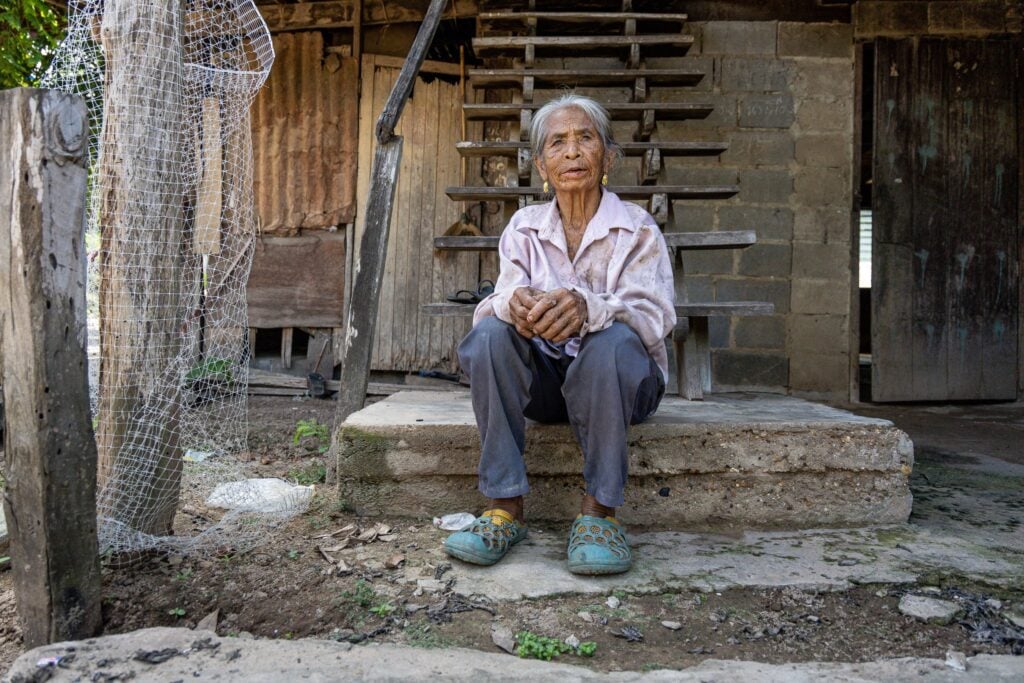UBON RATCHATHANI, THAILAND – A once-lively community on the Thai-Laos border has turned into a sleepy village after many residents left due to a loss of incomes and savings caused by declining fish stocks in the Mekong River.
“You have arrived at Dong Na, the Mekong River fishery hub,” says the message welcoming visitors on a weathered wooden sign at the entrance to Dong Na village in Ubon Ratchathani province in northeastern Thailand.
The sign commemorates the rich history of this riverside community, which was once a bustling place and the habitat of a diverse array of freshwater fish species.


But in recent years, the number of river fish has declined sharply, according to residents of the village. They link the decline in fish numbers to the construction of hydroelectric dams upstream, primarily in China, where 11 dams have been completed on the main Mekong River, as well as two in Laos.
In addition, more than 160 dams have been built on the Mekong’s tributaries and lower reaches, with more than 100 projects either in the planning or construction stages.
Since the dams’ construction upstream, villagers have observed erratic changes in water levels. Now, the water level often drops during the rainy season, when it should rise, and increases during the dry season, contradicting the natural cycle.
These fluctuations have significantly impacted the villagers’ lives. A once thriving fishing community now struggles for survival, with many abandoning traditional fishing for other jobs due to their reduced livelihoods from fishing.



“In the past, we could catch plenty of fish in a single day. But now, some species we used to consume are nearly extinct due to fluctuating water levels,” says Siboon Ussarid, a 71-year-old fisherman from Dong Na village.
“When the water rises and falls unpredictably, the fish vanish. Nowadays, we mostly catch small, hard-to-sell fish.”



The river’s transformation has impacted the villagers’ financial situation.
Previously, income from fishing and riverside farming allowed villagers to save and invest in livestock, such as cows and buffaloes, which also served as collateral for loans. Selling livestock could generate an annual income of about 30,000-40,000 baht (about US$850-$1,130) per household.
However, this traditional savings method has declined. With unstable incomes from fishing, many villagers have resorted to high-interest informal lending, leading to financial instability and poverty for some families.

The challenges of farming near the Mekong River have also been compounded by land issues.
In 1992, the government established the Pha Taem National Park, which overlaps with the villagers’ agricultural land. This is despite the fact that historical records show the communities have been there for more than a century.
The national park has limited villagers from expanding their agricultural activities. Some have turned to growing vegetables like taro, corn, rice and cassava on the riverbank.
Yet these efforts are often in vain, especially when the river level unpredictably rises, flooding their fields and leaving them without alternative sources of income.

Making a living now is not like it used to be because the water isn’t the same. In the past, when the water levels dropped, it would gradually recede inch by inch, going down until around May.
When the water dropped, villagers resorted to growing crops that could withstand dry conditions, and the yields were affected. Farming has now become unpredictable.
“The water used to rise, bringing fertile soil. Vegetable crops flourished. Even when the water receded, it left nutrient-rich soil, strengthening the land,” fisherman Siboon explained.
“It used to rise gradually, allowing us to prepare. Now, it can surge unexpectedly, ruining our crops. We can’t anticipate anything.”
When fishing yields nothing, some fishermen risk crossing the border in the middle of the Mekong into Laos, where conditions might be more favorable for fishing.
Jom Khanthiwat, a 64-year-old fisherman from Dong Na village, bears the scars of a gunshot wound he sustained 10 years ago. He recalled how he used to fish in Lao waters as there were fewer fish on the Thai side, at the risk of starting a territorial dispute.

Displaying a scar from a gunshot wound on his abdomen, a reminder of an incident a decade ago, Jom Khanthiwat recounted: “Back in the day, I used to sneak across to catch fish, maybe crossing the boundary, and I got shot by Lao soldiers. I had to jump into the water to escape. We often ventured into Laos for fishing due to its richer resources.”
As the number of fish being caught plummeted, and crossing the border was too risky now with strict border guard controls, many could not find better options other than leaving the village.



Many working-age adults from Dong Na village have migrated to Bangkok and other large cities for work, leaving the elderly behind. Their homes no longer provide secure incomes and savings.
If this trend continues, the welcoming signboard “You have arrived at Dong Na, the Mekong River fishery hub”, may soon be removed, marking the end of the village’s legacy.
This story was produced with support from the Internews’ Earth Journalism Network under the Our Mekong, Our Say project.





